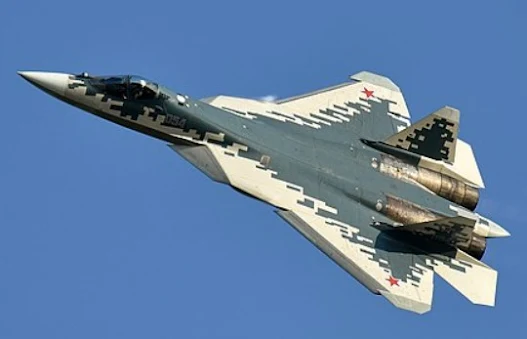 |
| Su-57 of 4th Generation Fighter Jets |
International Military - The Su-57 fighter jet has a special ability because it has a 360-degree thrust vectoring feature. This feature will greatly facilitate the pilots in operating the Su-57. The actual 360-degree thrust vectoring feature is also known only to be owned by the Su-57.
Reporting from Sandboxx, this thrust vector allows the pilot to direct the jet engine outflow regardless of the aircraft itself. Before the end, these jets could point in one direction while actually flying the other way. Its acrobatic capabilities, coupled with its low observability, will make the Su-57 a real threat to fourth-generation aircraft. The reason is, the ability of 3D thrust vectors and even then greatly affects the flight of fighter jets.
The 3D thrust vectoring at lower speeds and altitudes allows for some incredible acrobatic feats. The 3D thrust vectoring integrated into the stealth fighter makes it extremely ferocious in the air.
The Su-57 has a unique tandem weapons bay. The jet is also thought to have a pair of short-range air-to-air missile bays located under its wing roots. With its triangular canoe-like structure it is said to open like a clam shell to expose the missiles inside during combat.
Given the same set of X-band pulse doppler radars, it is possible (just for a hypothetical example) the Su-27 could be directly detected at 90 miles.
On the other hand, the Su-57 can be detected directly at a distance of 35 miles while the F-22 can be detected under ten miles. Sure it's a huge difference in performance, but it's only one aspect of the incredibly complex aerial combat equation. However, this claim is influenced by the network, sensitivity of onboard passive sensors, standoff weapon performance, low level of observability from various aspects, electronic warfare, tactics, speed, range, persistent support aircraft such as airborne early warning and control aircraft, and so on.
